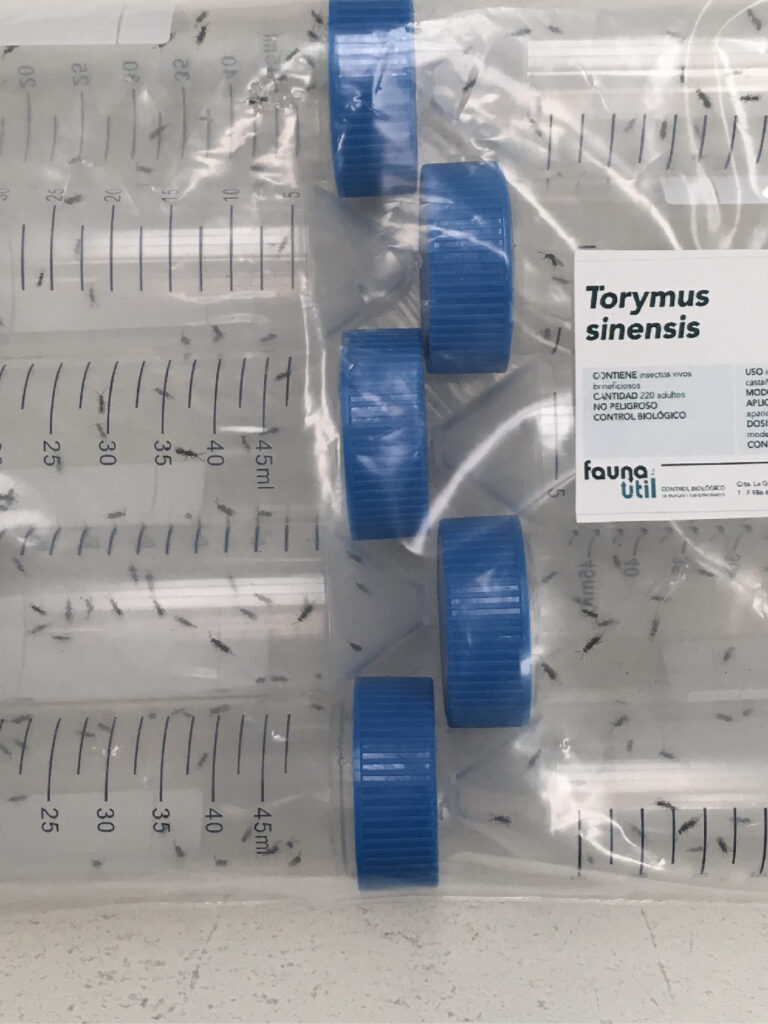Control of the
Chestnut wasp
One of the biggest threats to chestnut cultivation is the Asian chestnut wasp (Dryocosmus kuriphilus), which interrupts the growth of shoots and limits fruit production.
In Spain its presence was detected for the first time in 2012 in Catalonia and, two years later, in Galicia and northern Portugal.
Currently, this insect is listed in Annex III (List of protected areas and respective quarantine pests of protected areas and their respective codes) of the Implementing Regulation (EU) 2019 /2072 and is included in the A2 list of the EPPO.
Biological control of the chestnut wasp is based on the use of its natural enemy, the parasitoid Torymus sinensis, which develops inside the gills and breaks the Life cycle of the wasp pest (Dryocosmus kuriphilus). This parasitoid has been successfully introduced in Japan, Italy and Spain, among other places, with significant reductions in the presence of gills several years after the release of the parasitoid.
Plague cycle
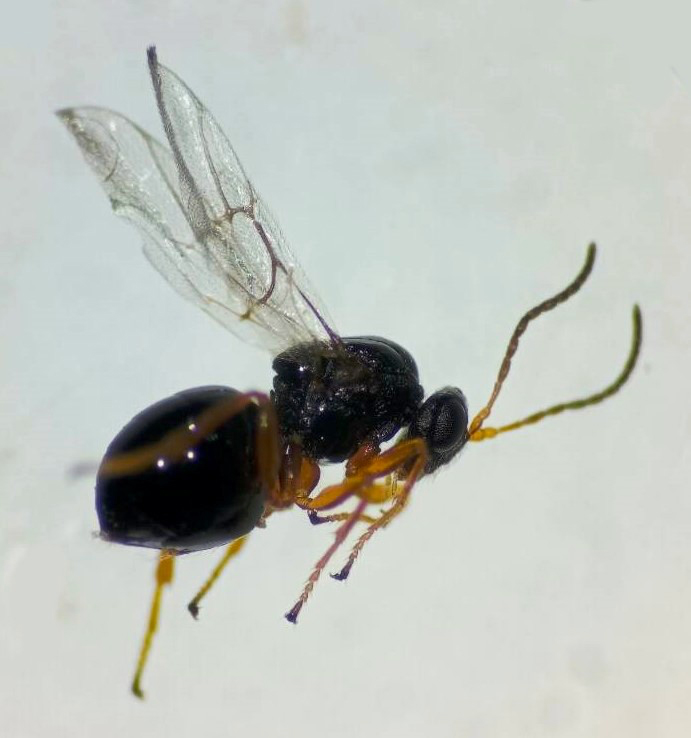
The chestnut wasp is a univoltine cynipid (it produces one generation per year) with reproduction by thelithic parthenogenesis, that is, only females develop from the eggs without fertilize, there are no known males of the species.
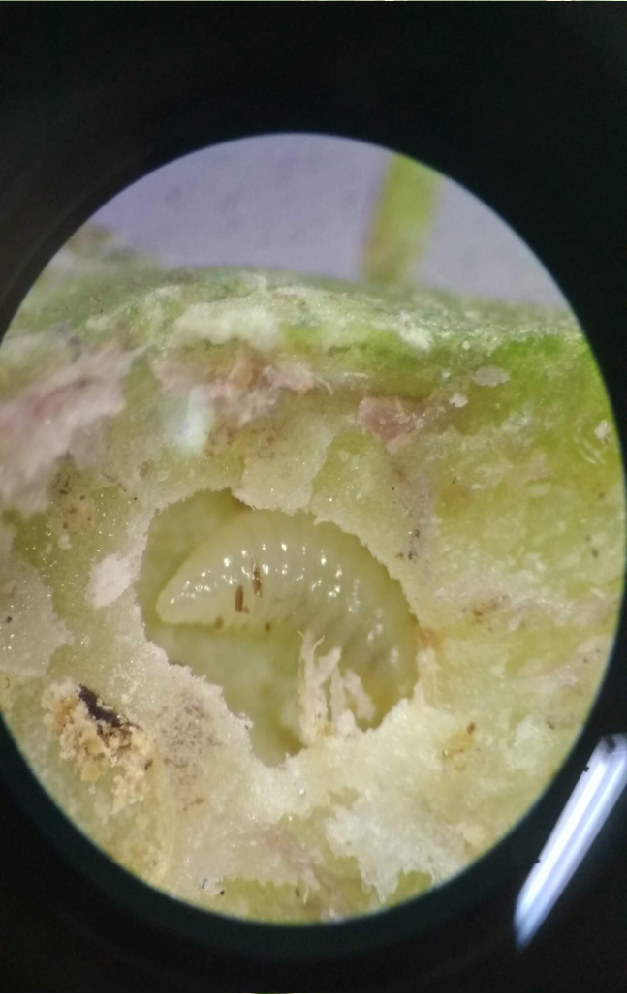
Adult females emerge in early summer and lay eggs inside the tree shoots.
Hatching occurs in 30-40 days and the first instar larvae develop slowly, remaining on the shoots during autumn and winter.
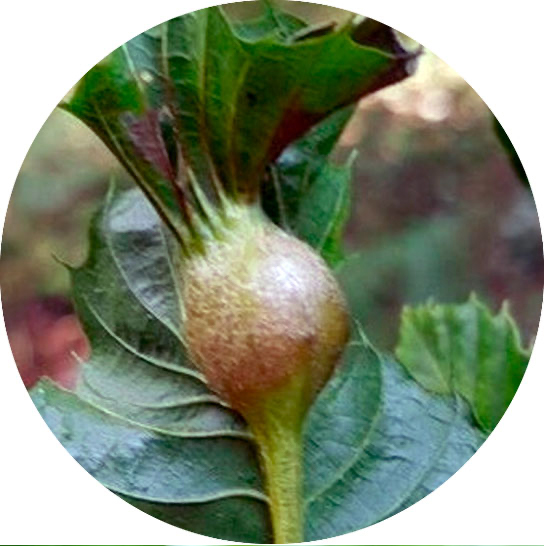
In spring, larvae feed for 20-30 days before pupating, inducing the formation of green to reddish galls on buds, leaves, and catkins masculine.
Depending on the climate and the chestnut cultivar, pupation takes place between mid-May and July.
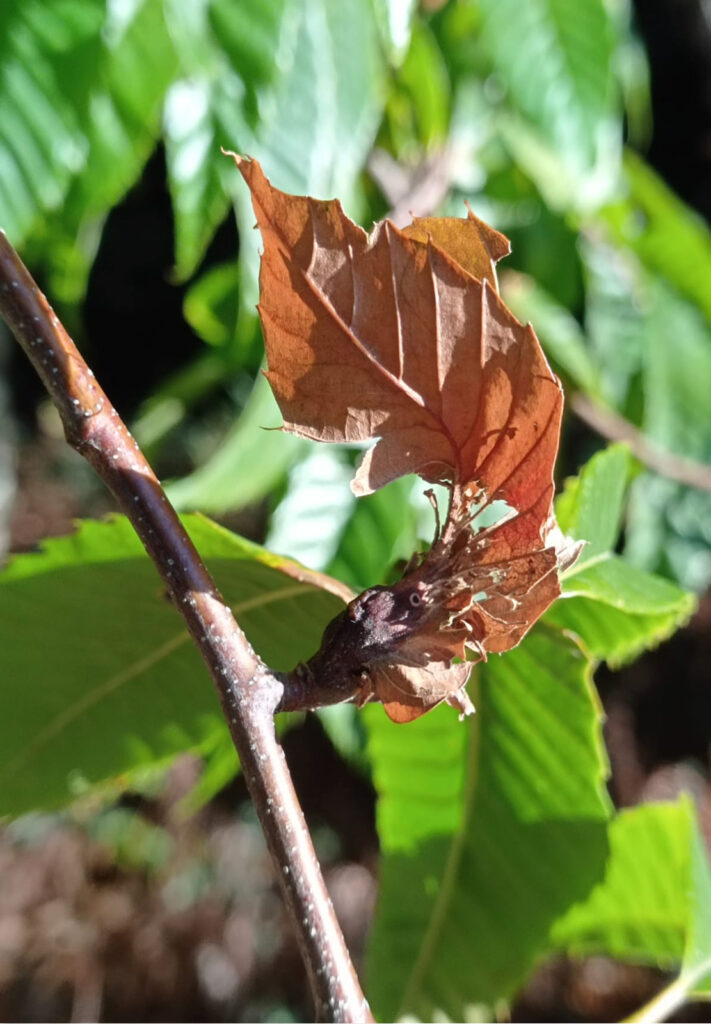
Adult females emerge from the galls between the end of May and July, being able to infect new shoots immediately.
After emergence, the galls dry out, taking on a woody appearance and remaining on the tree for several years.
Biological pest control
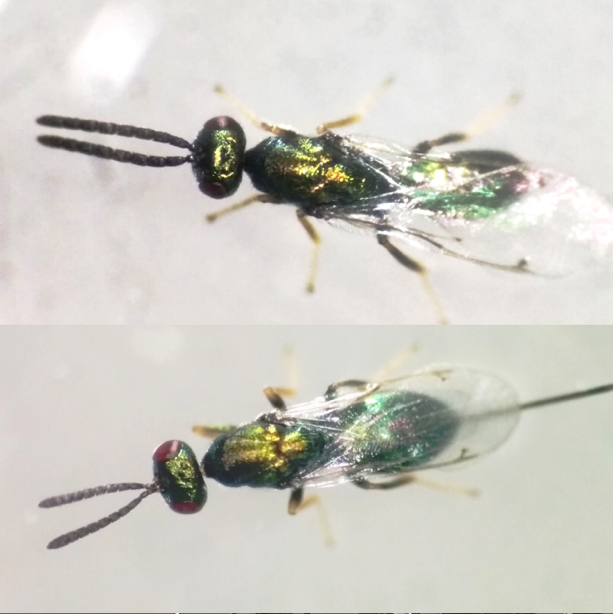
PARASITING
Torymus sinensis females spawn inside the gills, on the body or in the vicinity of the Dryocosmus kuriphilus larvae, feeding on them in an ectoparasitic manner. New parasitoids will emerge from these galls and look for new galls to parasitize.
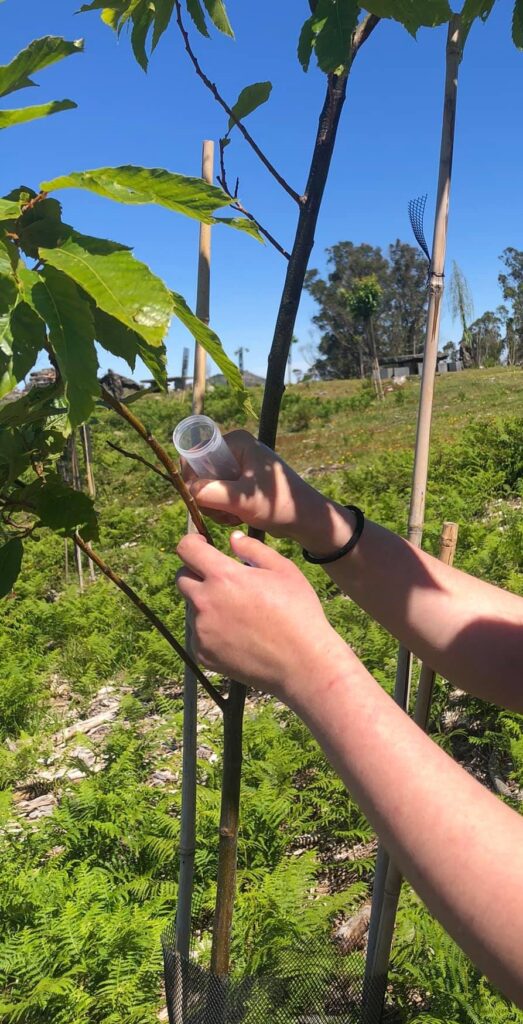
RELEASE
The Torymus sinensis specimens are placed in plastic tubes and transported to the release area in isothermal containers with controlled temperature.
Once the area where the treatment is to be applied has been chosen, the tubes are opened with the mouth facing upwards to facilitate the exit of the parasitoids.
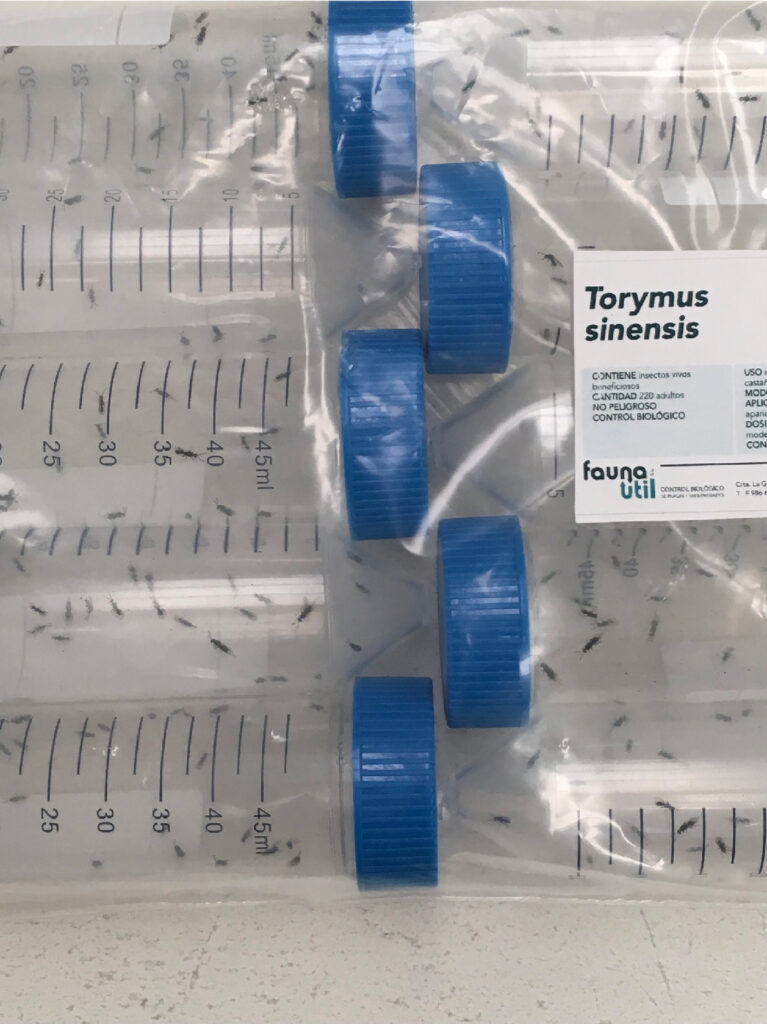
TREATMENT
• The recommended dose of treatment is 150 insects/hectare.
• The treatment should be applied when the trees begin to bud.
• The release should be carried out in a small group of nearby plants to facilitate that, in the next generation, males and females are easily found.
Calendario del tratamiento

Torymus sinensis Tube Pack
Company authorized for the commercialization
At Fauna Útil we provide packs of Torymus sinensis tubes to release them in the affected chestnut trees so that the parasitoids come out after hatching to locate new clutches to parasitize.
